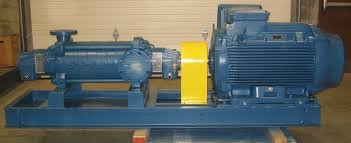Classification of High Pressure pump generally involves categorizing them based on their design, functionality, and application. Here are some common classifications:
- Based on Operating Principle:
- Positive Displacement Pumps: These pumps move a fixed volume of fluid with each cycle of operation. Examples include piston pumps, diaphragm pumps, and gear pumps. They are suitable for high-pressure applications because they can generate high pressures by restricting the flow.
- Centrifugal Pumps: While primarily used for lower to moderate pressures, specialized centrifugal pumps can also handle higher pressures. They work on the principle of rotating impellers to impart kinetic energy to the fluid, which is then converted to pressure.
- Based on Application:
- Water Jetting Pumps: Specifically designed for applications such as high-pressure cleaning, water blasting, and hydro demolition.
- Oil and Gas Pumps: These are used in oil well drilling, hydraulic fracturing (fracking), and other high-pressure applications in the oil and gas industry.
- Industrial Process Pumps: Used in manufacturing processes that require high-pressure fluid handling, such as in chemical processing plants and food processing.
- Based on Design:
- Reciprocating Pumps: These include piston pumps and diaphragm pumps, where fluid is displaced by a piston or diaphragm moving back and forth in a cylinder.
- Rotary Pumps: Gear pumps and screw pumps fall into this category, where fluid is moved by rotating elements within a casing.
- Based on Pressure Range:
- Low Pressure Pumps: Typically operate at pressures up to 1000 psi (pounds per square inch).
- Medium Pressure Pumps: Operate at pressures ranging from 1000 psi to 5000 psi.
- High Pressure Pumps: Operate at pressures above 5000 psi. These include pumps used in water jetting, hydraulic systems, and certain industrial applications.
- Based on Construction Material:
- Stainless Steel Pumps: Used in applications where corrosion resistance is crucial, such as in marine environments or chemical processing.
- Cast Iron Pumps: Commonly used in industrial applications where robust construction is required.
- Based on Drive Mechanism:
- Electrically Driven Pumps: Most common in industrial and commercial applications due to ease of operation and maintenance.
- Pneumatically Driven Pumps: Used where electricity is not available or in hazardous environments where electric sparks could be dangerous.
- Hydraulically Driven Pumps: Often used in heavy-duty applications where high power and reliability are required.
Each classification helps in identifying the suitable pump for specific requirements, considering factors such as pressure capacity, fluid compatibility, operational efficiency, and maintenance needs.

